

An Thoi
Phu Quoc Isand - Gulf of Siam
"The Early Days of Swift Boat Deployment"
 |
 |
The late summer of 1965 was a time of increased activity at the Naval Amphibious Base in Coronado as Swift Boats and
sailors began arriving for the expedited effort to fulfill the urgent request from the Commander of the Military Assistance
Command in Saigon, General William Westmoreland, for shallow water resources to be sent to bolster the recently formed Coastal
Surveilence Force that was attempting to stem the tide of North Vietnamese infiltation activiities by sea into South Vietnam.
The first two of an eventual fleet of one-hundred Swift Boats destined for service in South East Asia had been rushed for
staging in the Philippines directly from the Sewart Seacraft factory in Louisiana. Coronado was to be used as the work-up
base for the initial deployment of these new craft and their crews to the two areas of Vietnam designated as being in the
most critical need of the capabilities provided by these new vessels: Da Nang in the northern part of the country and Phu
Quoc Island in the Gulf of Siam near the Cambodian border.
|
 |
 |
 |
Of the initial eighteen Swift Boats delivered by Sewart, four (PCF's 1, 2, 7 and 8) were to be retained at
Coronado to form the first increment of training boats to be used by the hastily put together Patrol Boat
Division of the Naval Amphibious Training School. After a rapid check out, the follow-on boats would
be sent on to Subic Bay, joining PCF's 3 and 4 already there, before being moved to their final destinations
in Vietnam.
|
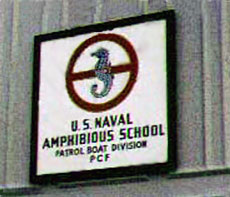 |
 |
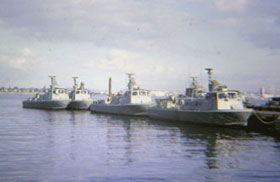 |
A small group of the first sailors assigned to Swifts were matched up with PCF's 3 and 4 in the Philippines ahead of the arrival of the larger group of volunteers. After a short familiarization period, these two boats were transported as deck cargo to Phu Quoc Island where the minimal base at An Thoi had been set up to receive them. They arrived on October 20, 1965 and immediately began combat patrols in the waters between the island and the mainland of of Vietnam. |
 |
 |
Then in late December, the other six boats assigned to Patrol Division 101 (PCFs 5, 6, 9, 10, 11, and 12) were loaded into
the USS Catamount (LSD-17) and transported from Subic Bay to just offshore of Phu Quoc. The well deck gate of the
Catamount was lowered, and the proud "Patrol Craft Fast" vessels demonstrated that they were aptly named as they
proceeded at full bore into the harbor and tied up to the pier just in time to celebrate Christmas Eve December 24, 1965
in their new home at An Thoi. The first Swift Boat division in Vietnam was now open for business.
|
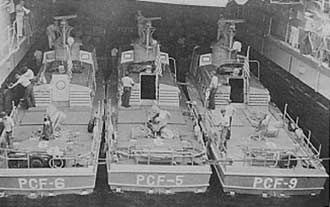 |
 |
 |
 |
Because of the speed of the deployment of the Swifts, conditions at the base as the boats arrived were rudimentry bordering
on non-existant. The only accomodations availalble ashore for the crews and support personel were tents scrounged from
wherever the navy could find them and assembled by the crews themselves. Facilities for maintenance, upkeep and repair of
the boats simply were not available. Operational necessities such as fuel, ammunition, etc were provided by periodic visits
to the offshore support vessel USS Krishna (ARL-38), where comand staffs were set up for both Patrol Craft
Fast Division 101 and Coast Guard Squadron One. Meals initially were C-rations plus whatever else could be scrounged
from the Krishna or local inhabitants.
Perimeter security was provided by the South Vietnamese Navy which already had a small base established at An Thoi.
And basic services such as living space maintenance and laundry services were contracted out to locals from the small
adjacent VNN dependent's village.
|
 |
 |
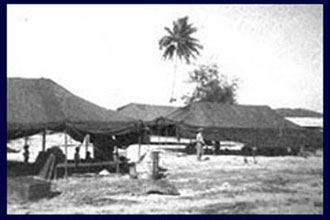 |
 |
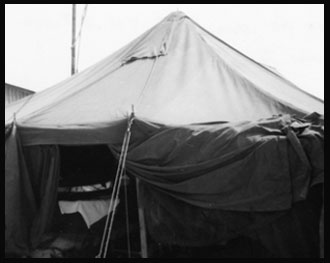 |
 |
 |
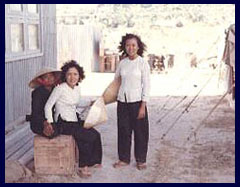 |
Perhaps it took an early visit by the Secretary of the Navy, Paul Nitze, to really get things rolling at An Thoi. At any rate, after he spent a few days living in the tents, swatting mosquitos and participating in one or two patrols on the boats, "stuff" started arriving to make life more bearable. Most urgently, were materials to construct copies of that staple of World War Two, the quonset hut. A combination of sailors from the Krishna, SeaBees, local workers and Swift Boat crewmen soon had the more substantial buildings up and ready for occupancy. It was never firmly established how that boat load of San Miguel beer arrived from the Philippines. But the contents were well appreciated by those working on the quonsets. Thank you Mister Secretary, if that is appropriate. Cheers! |
 |
 |
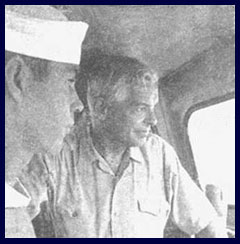 |
 |
 |
 |
 |
 |
Soon a civilian construction company arrived and set up their own camp to house workers and equipment. A road from the base to the small airport on Phu Quoc was established and White Hat Airlines began periodic transportation flights to and from Saigon using the military version of the Douglas DC-3 aircraft. |
 |
 |
 |
With the new year of 1966 came additional boats of all types and less space at the single pier. One of our allies,
Thailand, even made a visit with their impressive PGM patrol boat
A significant task for those establishing the bases of operations for the newly arrived Swift Boats was to set
up the required facitlites to dock, replenish, maintain and repair the boats as they were put into service in a harsh
environment. The boats and crews would require constant care in order to sustain the tempo and level of operations
envisioned by the planners of the inderdiction strategy. Establishment of those capabilities took time and was
still in the future. In the meantime, the boats and crews did the best they could with what they had available to them.
Which was not very much
|
 |
 |
 |
 |
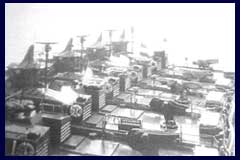 |
 |
But the most difficult job that had to be addressed quickly was to define, develop and refine the roles of the Swifts
in this new kind of warfare. There was no rule book or set of official procedures to guide what, where and how the new
arrivals were to provide the results that were asked of them: Stop the flow of arms, men and materials into the south
that was sustaining the enemy soldiers that had infiltrated from North Vietnam.
It did not take long for the Swift Boat sailors to work out the major tasks to be accomplished and the details of
how to go about making sure they were performed sucessfully: Searching, boarding, checking, establishing rapport with
the local junk owners to obtain the latest rumors and intelligence, pro-acting and then reacting with weapons support
for the land based Vietnamese and American forces trying to pacify the coastal area, providing liasion with the larger units
of the Coastal Surveilence Force further offshore, and giving interviews for public relations press reports made both
in-country and back in the US. Plus in spare moments making visits to establish friendships and provide assistance to
the South Vietnamese Navy and the local population.
As the lessons were learned and perfected, they were written down and/or passed on informally and formally to the
Swift Boat sailors that were preparing to enter the country and set up PCF divisions in other parts of the country.
It was a difficult but interesting time to be a sailor participating in this new task, in a strange world with unknown
dangers waiting to rise up and smite the neophytes at any moment. It is a tribute to the men who manned the boats at
this early stage that the mission was brought up to speed in such a short time
|
 |
 |
 |
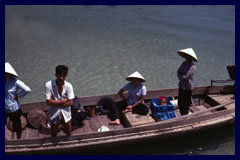 |
 |
 |
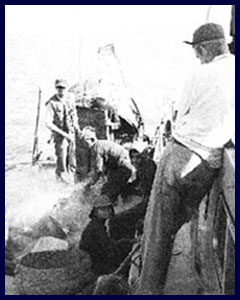 |
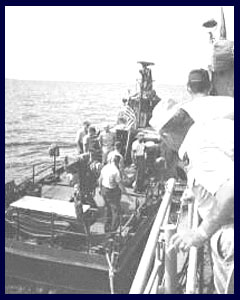 |
 |
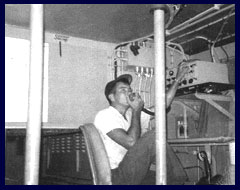 |
 |
 |
 |
 |
 |
 |
 |
 |
 |
 |
 |
However, the defining moment of transition between the excitement of this new adventure and the stark reality that Vietnam was a very dangerous place came with the tragic loss of PCF-4 only a few weeks into the new year of 1966. Somber perseverance and dedication replaced enthusiasism as the sadness of the sudden absence of close friends and shipmates marked the true nature of the task that these different kind of sailors had embarked upon. |
|
|
|
|
| View the story of the Loss of PCF-4 |
One of the best indicators of the success that sprung forth from the inital struggles of the early Swift Boat and associated sailors in fulfilling the assigned mission of this new craft and task is an aerial view of the An Thoi base in late 1970, near the end of the US involvement in the conflict. Quite a contrast from the tents and C-rations that greeted the first eight boats to arrive at the lonely pier on a Christmas Eve in a strange land so far away |
 |
This web site is Copyright � 2002 by Robert B. Shirley. All rights reserved. Click on image to return to the homepage
|